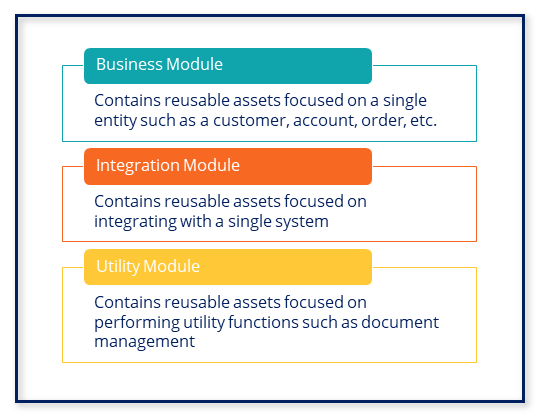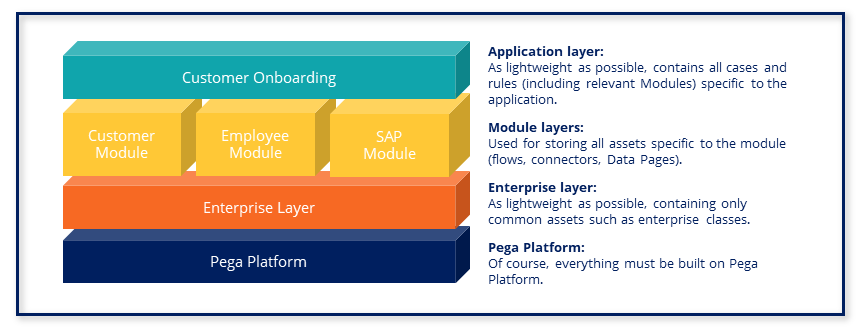We’re pleased to bring you the latest in a new series of video shorts, Pega Express Bytes, designed to provide you with easily digestible best practices and help you deliver even more successful Pega solutions. In the following three-minute video, we talk about something that is of huge value to our clients: reuse.
The value of reuse in Pega solutions
If you prefer to read and learn rather than watch and learn, the video content is repeated below in this blog. As always, if you have any questions or comments, please reach out to the Pega Express™ team at [email protected].
[Please log in to Community to watch the following video.]
So, let’s talk about reuse, the benefits it can deliver, and how to approach and apply reuse in a modern Pega implementation.
Applying modern reuse in Pega implementations
Let’s start with why we do it. Building for reuse makes process development cheaper, easier, more scalable, and ultimately faster. That’s why reuse is core to the Pega Platform™ experience. But modern reuse in Pega doesn’t mean making multiple copies of the same rule. Instead, we create small building blocks that can be assembled to form an end-to-end process. Good examples of this are ”Make a payment,“ ”Update a customer address,” and “Send a communication.“
We package these reusable blocks together in small, lightweight applications called modules. You can add modules to any application that needs to use its features. Each module focuses on one area of functionality. Taking “Update a customer address” as an example, it involves a single data object, the address record, and only needs to contain a few rules to perform actions upon it, such as connectors, Data Pages, and properties. If you create tens or hundreds of small self-contained modules, you start building a library that you can reuse across all applications.
We begin by identifying reuse candidates as early as we can. You won’t know all of your reuse candidates upfront, and that’s fine. It’s an ongoing process as your applications evolve. Professional developers create the reusable blocks in Dev Studio, App Studio, or a combination of the two, and make them available for process developers to assemble into a business workflow, a Case Type, in App Studio.
In Pega Infinity™ ‘23, a new Reuse Library feature makes it even easier to find and assemble the right blocks in App Studio for a seamless authoring experience. As your reuse library grows over time, assembling your workflows becomes faster because you’ve got a lot of what you need already built!
Architecting in modules moves away from monolithic frameworks towards applications that bring agility to how you build, test, deploy and govern your applications. This modular approach makes the best use of Pega’s Situational Layer Cake™ and Center-out™ approach and focuses on encapsulation and extensibility of business, integration, and utility-based functionality.

Modularity also makes it super simple to model your business architecture in Pega Platform.

If we put all of this together, it’s why many of our clients are now building applications four times faster than they used to and why reuse is a Pega Express best practice — it leverages the power of Pega and accelerates speed to value.
Happy Reusing!
Related Resources
- Pega Academy: Modular Enterprise Foundation mission
- Pega Express best practice: Reuse Strategy
- Video: Enterprise low code in a modular landscape. How Rabobank builds for the future with Pega
- Video: LeasePlan’s Transition to a Fully Digital Business Model (~29 minute mark)
Don't Forget
- JOIN THE CONVERSATION on Support Center
- FOLLOW @PegaDeveloper on Twitter

